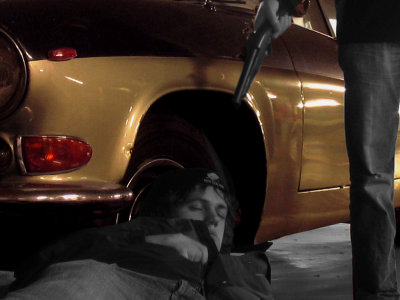What is Australia's feat that is said to have dramatically reduced shootings?

On May 25, 2022, a
Australia confiscated 650,000 guns. Murders and suicides plummeted. --Vox
https://www.vox.com/2015/8/27/9212725/australia-buyback
On April 28, 1996, a man named Martin Bryant fired a semi-automatic rifle at a cafe in Port Arthur, a tourist destination on Tasmania, Australia. He shot and killed people in the cafe one after another, then changed places and continued firing, eventually killing 35 people. Bryant was subsequently arrested by police and sentenced to 35 life imprisonments without parole. This incident was later called the Port Arthur Incident and became known as a tragic event in Australian history.
John Howard, then Prime Minister of Australia, advocated domestic gun control immediately after the incident. He persuaded both the party and the state to agree to a drastic reform of the national gun control law. A month after the incident, a national firearms agreement was drafted, imposing a registration obligation on all guns owned in the country, requiring a permit or license to purchase all new firearms, and for carrying firearms. Needed to prove a 'real reason' that does not include self-defense.
Boshan points out that one of Australia's most important agreements is 'a total ban on the possession of certain types of guns, such as automatic rifles and shotguns.'
Australia enforces compulsory 'purchase' of certain guns owned by the people, in addition to regulations such as registration obligations and licensed mobile phones. Instead of collecting the guns that were illegal under the above agreement from the public, we responded by paying a fair price. Also, the person who handed over the gun, which was already illegal, was given a legal amnesty not to punish him for possession, although no compensation was given.
Despite concerns that such forced purchases could cause public backlash, Howard delivered a speech in bulletproof vests in front of people who appealed against gun control. Fortunately, there was no violence. The purchase peacefully seized about 650,000 legally owned guns and then destroyed them by the government. According to one study, this number represents about 20% of all privately owned guns in Australia at the time.

by
In 2011, David Hemenway and colleagues at Harvard University scrutinized a study (PDF file) investigating how gun suicides and murders changed due to Australian gun regulation, and found that Australia was seven years after the regulation. It was revealed that the average firearm suicide rate in Australia had decreased by about 57% compared to before the regulation. In addition, the average firearm homicide rate was reduced by about 42% compared to before the regulation.
Australia's homicide rate was declining before the regulation, so it seems that it is not entirely due to the regulation, but the death rate from the most purchased type of firearms was significantly reduced, and the purchase rate is high. The impact of the regulation on the reduction in homicide and suicide is due to the fact that the mortality rate was lower in the states and that the two years immediately after the regulation were the two years in which the homicide rate declined the most in the 100 years from 1915. Hemenway et al. Argued that it was big.
However, when a meta-analysis was conducted by the RAND Corporation of think tanks in 2021, it was found that it was extremely difficult to identify that the regulations contributed to the reduction of gun violence. No significant evidence was found that regulation had a significant impact, especially in murder cases. Still, Rand Corporation wrote that 'the strongest evidence is consistent with the allegations that regulations have led to a reduction in firearm suicides, mass murders and female murder victims.'
Boshan develops his theory about this description. First, suicide is often an impulsive choice, often not repeated once attempted. Because guns are designed specifically for murder, attempted suicide with a razor or pill is easier to succeed than attempted suicide with a gun. As a result, restricting access to guns increases the likelihood that each attempt will fail, and as a result, people will survive and will not attempt to hurt themselves again, Boshan points out.
Regarding the reduction of female victims, 'Women are unreasonably more likely to be killed by their male partners as part of domestic violence. Perpetrators who have access to murder-specific weapons are more likely than otherwise. Is likely to kill a partner, 'says Boshan.
Mass shootings are also extremely rare cases carried out by some individuals, and Boshan points out that reducing the availability of guns can reduce the occurrence of the incident. A 2018 study showed that there were 13 shootings in Australia that killed more than five people in the 18 years before the Port Arthur incident, but have dropped to one after the incident. 'Because of the many cultural and political differences, Australian lessons do not always apply to the United States, but when considering gun violence and how to curb it, Boshan said. , Australia's gun regulations and regulatory changes are likely to be noteworthy. '

Related Posts:
in Posted by log1p_kr







